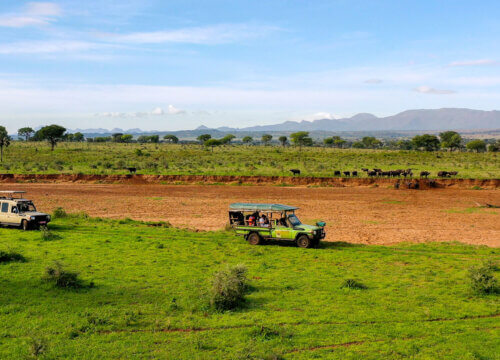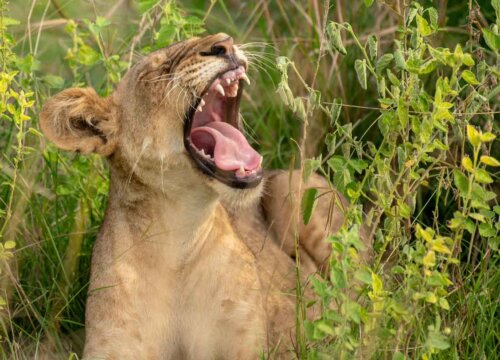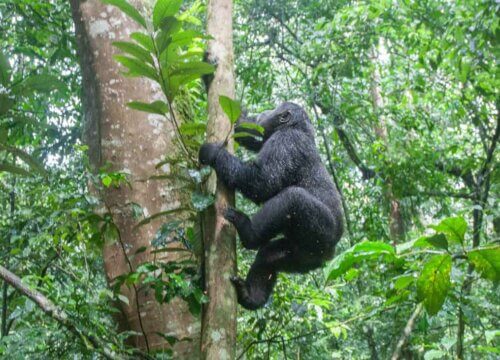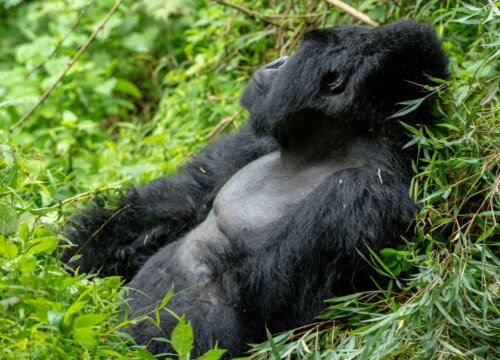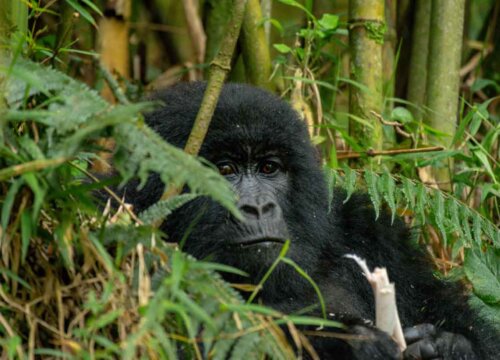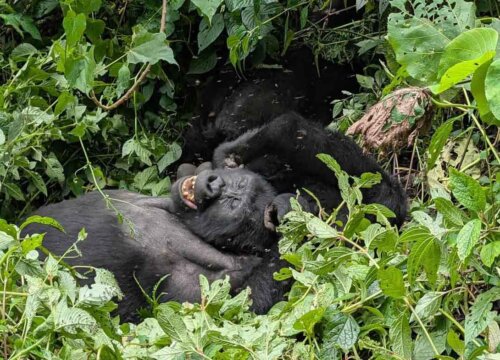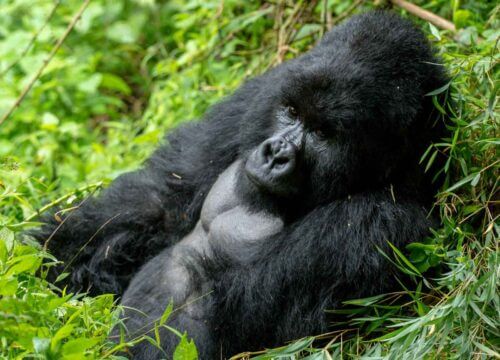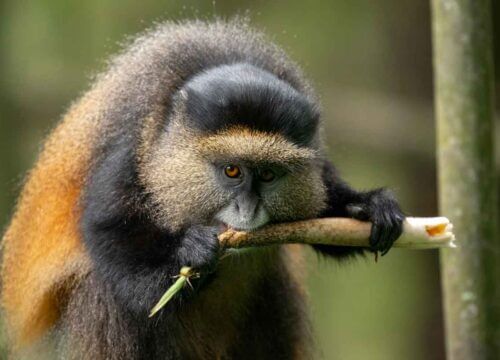What to expect on a safari during the rainy season in Uganda
What to expect on a safari during the rainy season in Uganda
Embarking on a safari in Uganda during the rainy season, also known as the green season offers a unique and rewarding experience for adventurous travelers. While many may associate safaris with the dry season, the rainy season usually running from March to May and October to November unveils a lush and vibrant side of Uganda’s landscapes. However, it also comes with its own set of challenges and considerations. Below, we explore what you can expect during this time, along with tips to make the most of your journey.
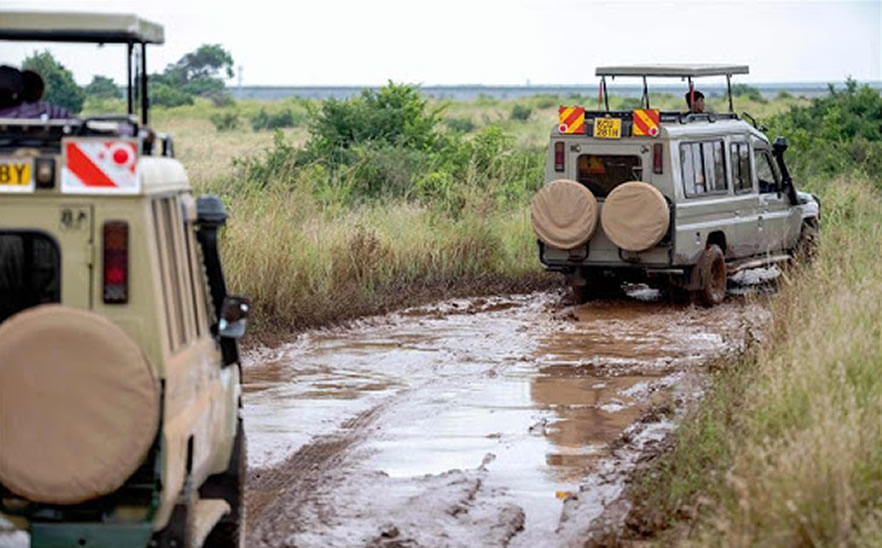
What to expect on a safari during the rainy season in Uganda
Abundant wildlife viewing
Contrary to common misconceptions, wildlife viewing remains excellent during the rainy season. Uganda is home to diverse ecosystems including savannahs, forests and wetlands, which support a rich variety of species. Animals such as elephants, lions, giraffes and antelopes are still active and visible. In fact, the rains often refresh vegetation, attracting herbivores to graze in open areas. Predators are never far behind, creating opportunities for exciting sightings.
One of the highlights of a Ugandan safari is gorilla trekking in Bwindi Impenetrable National Park or Mgahinga Gorilla National Park. While trails may be muddier during the rains, gorilla families tend to remain in lower altitudes due to the abundance of food, potentially shortening trekking distances. This can be an advantage for visitors who prefer less strenuous hikes.
Breathtaking scenery
The rainy season transforms Uganda into a green paradise. The landscapes become lush and green, offering stunning backdrops for photography. Rolling hills, dense forests and expansive plains thrive under the rains, creating a sense of renewal and vitality. The beauty of Uganda’s natural scenery is particularly striking during this time, making it an ideal season for nature enthusiasts and photographers. Additionally, the rainy season often results in fewer crowds compared to the dry season. This means you can enjoy a more intimate and serene safari experience without competing for prime wildlife viewing spots.
Birdwatching opportunities
For bird lovers, the rainy season is a prime time to visit Uganda. The country is home to over 1,000 bird species and during this period, migratory birds from Europe and other regions arrive to take advantage of the favorable conditions. Wetlands such as Mabamba Swamp and Queen Elizabeth National Park’s Kazinga Channel are teeming with birdlife including the iconic shoebill stork, kingfishers and African fish eagles. The rains also mark the breeding season for many resident bird species. This means you are likely to witness vibrant plumage displays and fascinating courtship behaviors.
Unpredictable weather conditions
As expected, rain showers are frequent during this season and can vary in intensity. Mornings are often sunny and pleasant with rains typically occurring in the afternoons or evenings. However, weather patterns can be unpredictable, so it is essential to be prepared for sudden downpours.
Roads and trails may become slippery or waterlogged, particularly in remote areas or national parks. This can make travel slightly more challenging but also adds an element of adventure to your safari. Many lodges and tour operators like Giant Holiday Safaris are well-equipped to handle these conditions and will ensure your safety throughout your journey.
Affordable rates
One of the significant advantages of visiting Uganda during the rainy season is the affordability. Many lodges, campsites, and tour operators offer discounted rates during this period due to lower tourist demand. This makes it an excellent opportunity for budget-conscious travelers to experience high-quality accommodations and services at a fraction of the cost. Additionally, permits for activities like gorilla trekking are sometimes offered at reduced rates during the green season. This can make gorilla trekking experience more accessible to a wider range of travelers.
Cultural experiences
The rainy season provides an excellent opportunity to engage with Uganda’s rich cultural heritage. With fewer tourists around, you may have more personalized interactions with local communities. Consider visiting cultural sites or participating in traditional activities such as dance performances or craft workshops.
What to expect on a safari during the dry season in Uganda
Uganda is a destination that captivates travelers with its breathtaking landscapes, diverse wildlife and remarkable cultural heritage. For those planning a safari, the dry season which typically spans from June to September and December to February offers an ideal window to explore Uganda’s natural wonders. This article outlines what you can expect during a safari in Uganda’s dry season, giving you insights into weather conditions, wildlife encounters and practical tips for a memorable experience.
Weather conditions during the dry season
The dry season in Uganda is characterized by warm, sunny days with minimal rainfall. These favorable weather conditions make it easier to cross the national parks and enjoy outdoor activities without the challenges of muddy trails or heavy downpours.
The dry season also coincides with Uganda’s peak tourism period as the reduced rainfall improves road access and enhances visibility in the savannahs. While the weather is generally pleasant, it is important to pack lightweight clothing, sunscreen, a hat and plenty of water to stay comfortable under the African sun.
Prime wildlife viewing opportunities
One of the main draws of visiting Uganda during the dry season is the exceptional wildlife viewing. As water sources become scarce, animals congregate around rivers, lakes and waterholes, making it easier to spot them. Here are some highlights of what you can expect:
Big game in savannah parks
Uganda has several iconic national parks including Queen Elizabeth National Park, Murchison Falls National Park and Kidepo Valley National Park. During the dry season, you will have a higher chance of spotting elephants, lions, leopards, giraffes and buffaloes in these savannah regions. The open landscapes and reduced vegetation enhance visibility, making it easier to observe wildlife in their natural habitats.
Gorilla trekking in Bwindi Impenetrable Forest
Uganda is one of only three countries in the world where you can experience mountain gorilla trekking. The dry season is considered the best time for this rare adventure in Bwindi Impenetrable National Park or Mgahinga Gorilla National Park. With drier trails and less slippery terrain, trekking becomes more manageable allowing you to focus on the amazing experience of encountering a gorilla family closer.
Chimpanzee tracking in Kibale Forest
Kibale National Park is renowned for its high concentration of chimpanzees as well as other primates. During the dry season, chimpanzee tracking is particularly rewarding as the primates are more active and easier to locate. The forest trails are also less muddy, making for a more enjoyable trek.
Birdwatching
Uganda is a birdwatcher’s paradise with over 1,000 bird species. The dry season offers excellent birdwatching opportunities as migratory species arrive and resident birds are more visible around water sources. Key spots for birding include Mabamba Swamp which is home to the rare shoebill stork, Lake Mburo National Park and Semuliki National Park.
Scenic boat safaris
Uganda’s waterways come alive during the dry season, offering unique perspectives on wildlife and landscapes. Popular boat safari destinations include Kazinga Channel in Queen Elizabeth National Park, Victoria Nile in Murchison Falls National Park and Lake Mburo in Lake Mburo National Park.
Cultural experiences
While wildlife often takes center stage on a Ugandan safari, the country’s rich cultural heritage should not be overlooked. During your safari, you will have opportunities to interact with local communities such as the Batwa people near Bwindi or the Karamojong in northeastern Uganda. These encounters provide valuable insights into traditional practices, music, dance and storytelling.
Photography opportunities
The dry season offers excellent conditions for photography enthusiasts. The clear skies and abundant sunlight provide optimal lighting for capturing vibrant images of wildlife and landscapes. Early mornings and late afternoons are particularly magical times for photography as the soft golden light enhances colors and textures.
What challenges should you expect during the dry season on your safari?
Crowds. As this is the peak tourism season, popular parks and lodges may be busier than usual. To secure your preferred accommodations and permits especially for gorilla trekking, it is advisable to book in advance with Giant Holiday Safaris.
Dusty conditions. The lack of rain means that roads and trails can become dusty. Wearing a scarf or bandana can help protect your face during game drives.
Higher costs. Due to increased demand, prices for accommodations and activities tend to be higher during the dry season compared to the wet season.
What should you pack on your safari in Uganda
Packing appropriately is crucial for a successful safari. Here are some key items you should include:
- Packing a durable rain jacket or poncho is essential to stay dry during sudden showers. Waterproof covers for your backpack and camera gear are also recommended.
- Invest in waterproof hiking boots with good traction to cross muddy trails comfortably.
- Bringing lightweight clothing that dries quickly is ideal because while it may rain frequently, temperatures remain warm and humid.
- Pack an insect repellent because the rainy season often brings an increase in mosquitoes and other insects. Take a strong insect repellent containing DEET or other effective ingredients.
- Take binoculars essential for birdwatching and spotting distant wildlife.
- Packing a reusable water bottle to help you in staying hydrated is important in Uganda’s tropical climate.
For more information about what to pack on your safari in Uganda, contact Giant Holiday Safaris.
Explorer More Safaris
- 14-Days Uganda Safari Gorilla Chimpanzees and Wildlife
- 12 Days Gorillas and Chimpanzees Wildlife Safari
- 10 days best of uganda primates & wildlife safari
- 6 Days Gorillas and Chimpanzee Trekking Safari
- 3 Day Bwindi Gorilla Trekking Safari
- 4 Day Uganda Gorilla Trekking and Wildlife Safari
- 4 Days Gorilla Trekking and Adventure Safari
- 5 Days Uganda Gorillas and Chimpanzee Tracking Safari
- 4-Day Rwanda Gorilla Trekking and Golden Monkey Tracking Safari
- 5 Day Gorilla Habituation and Chimp Trekking
- 4-Day Uganda & Rwanda Gorilla Trekking Tour
- 3 Days Bwindi Gorilla Trekking Ugnada from Rwanda
- 10 Days Uganda Primates and Game Safari


